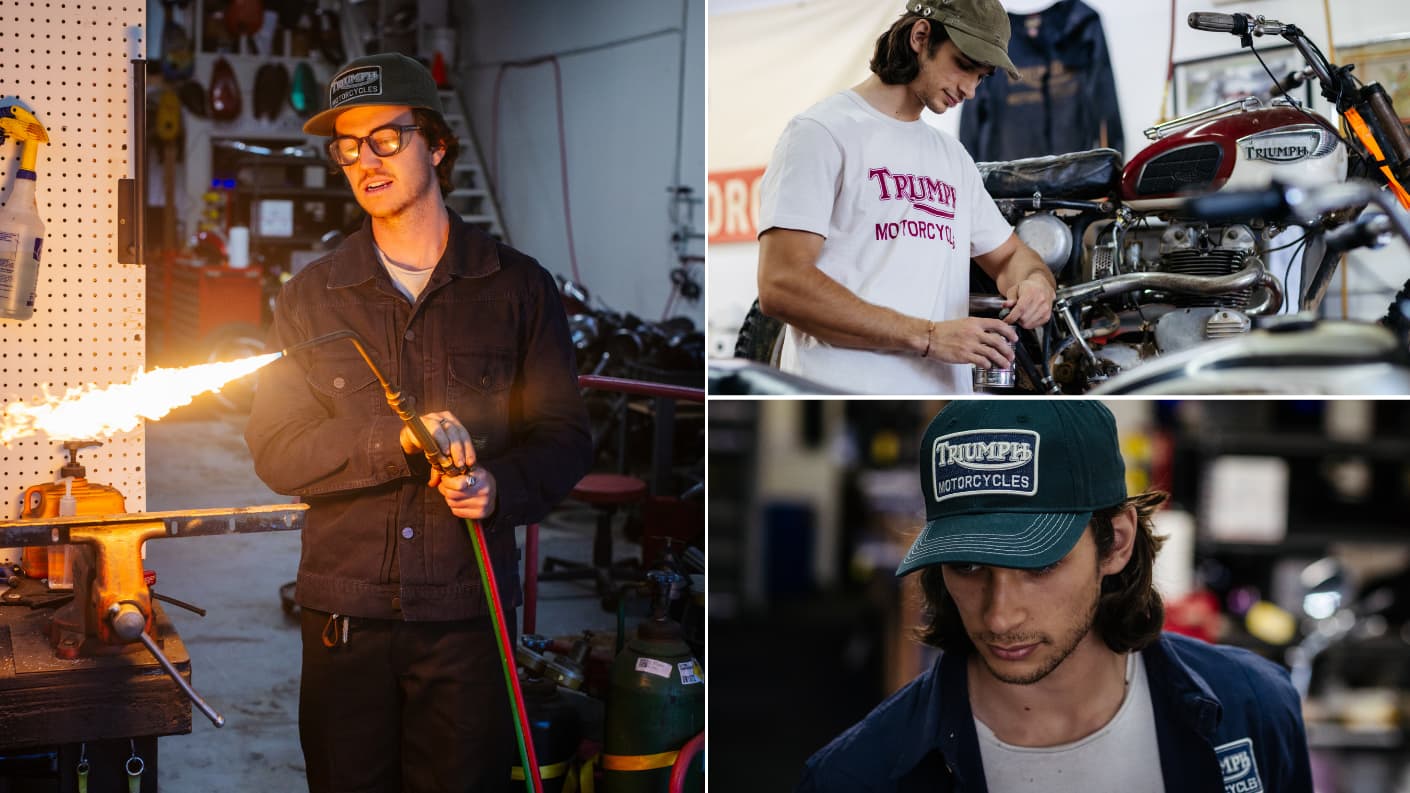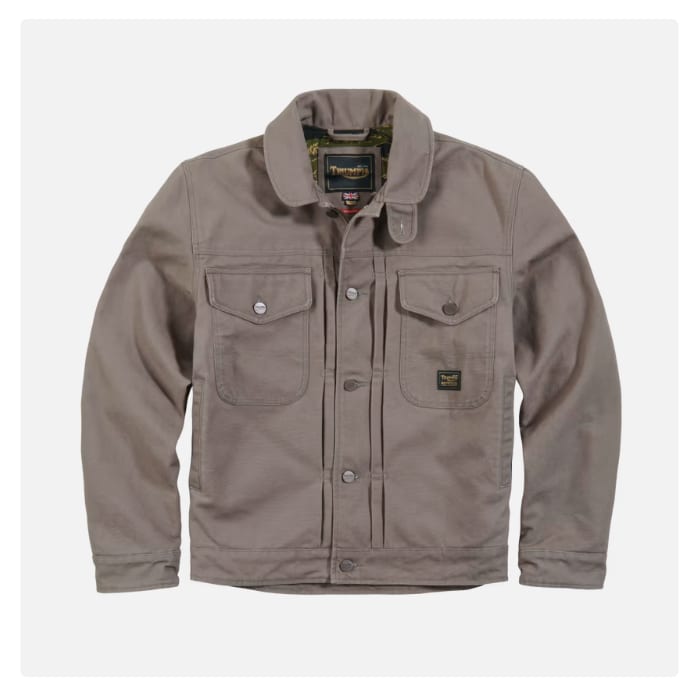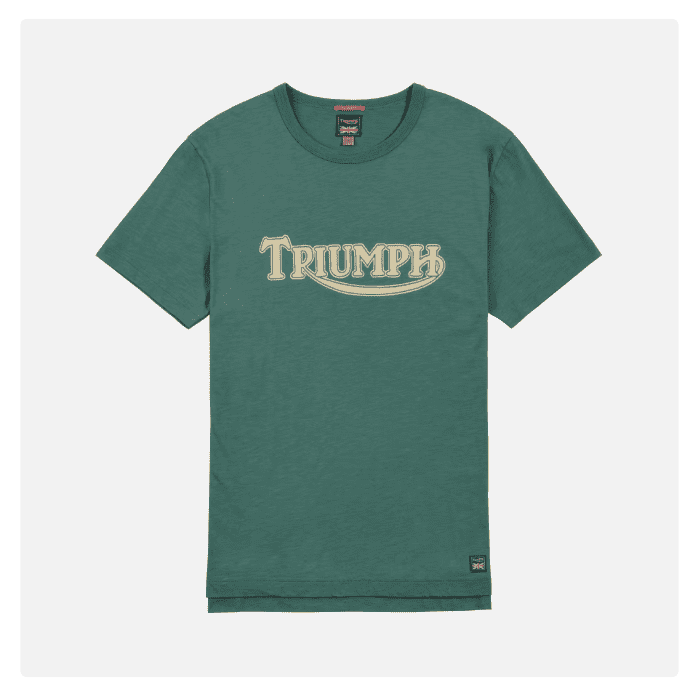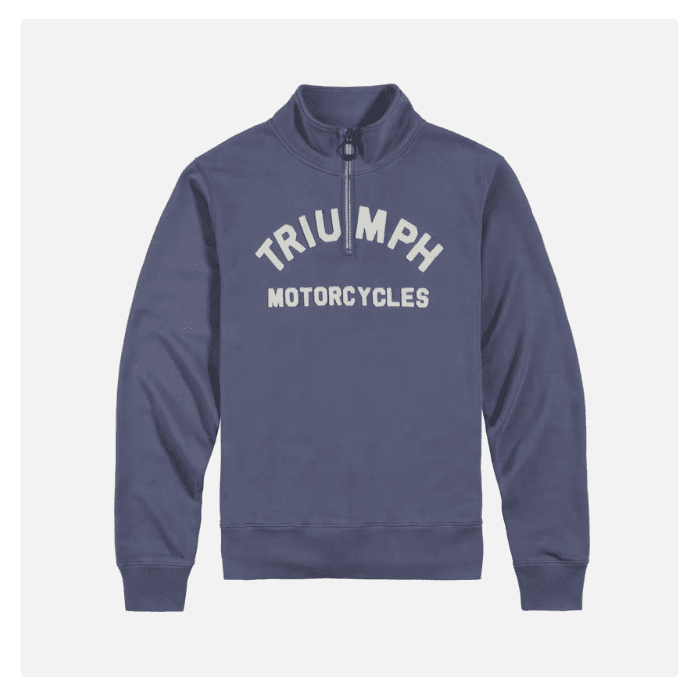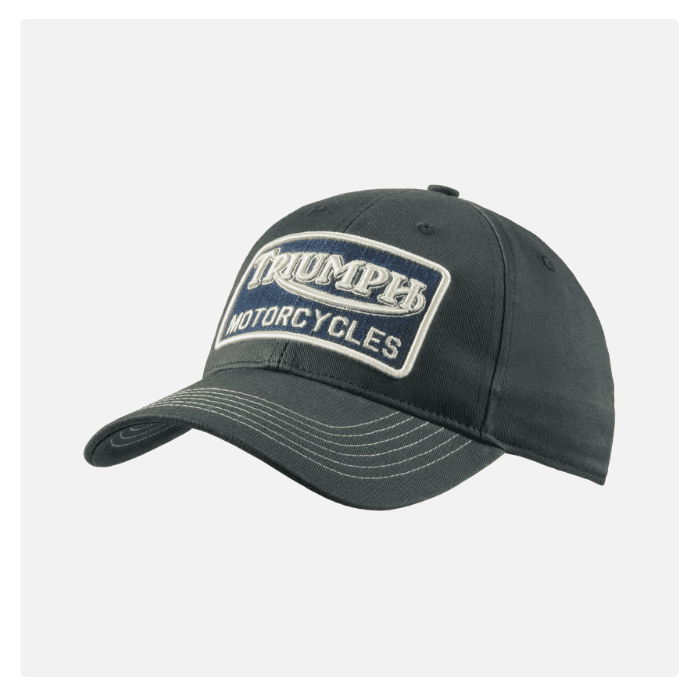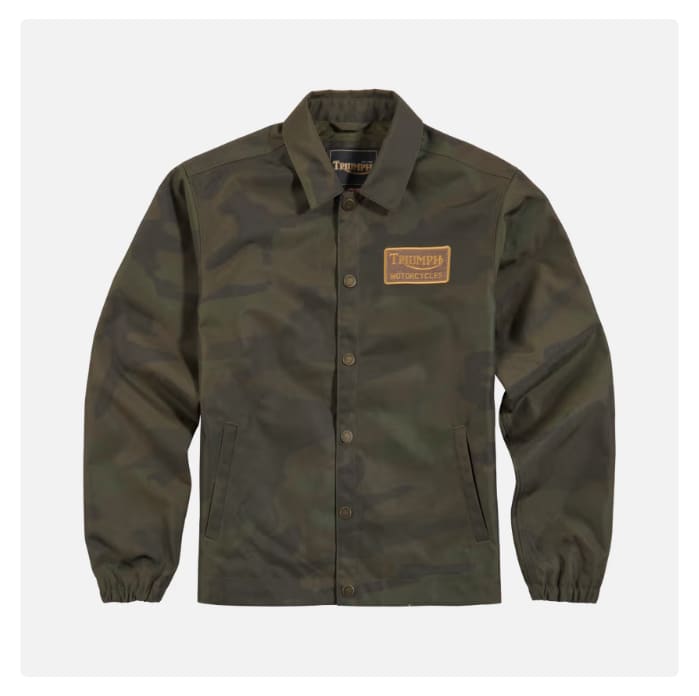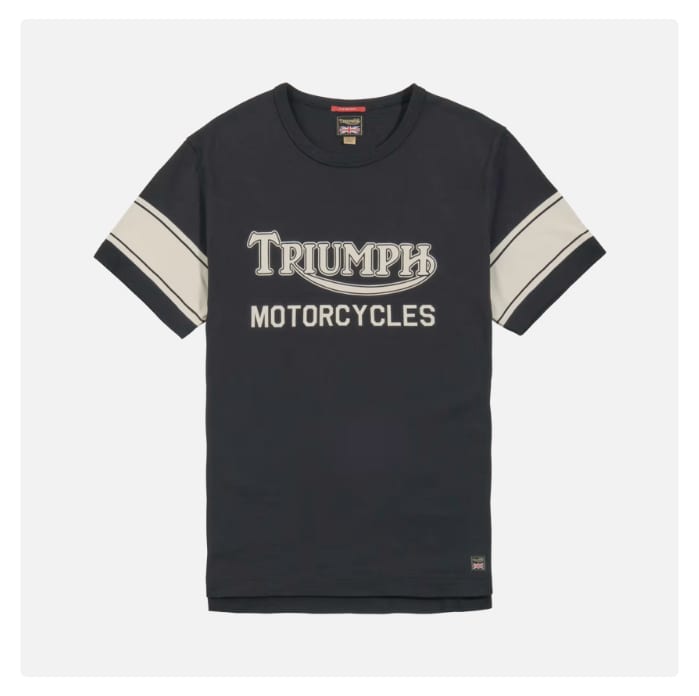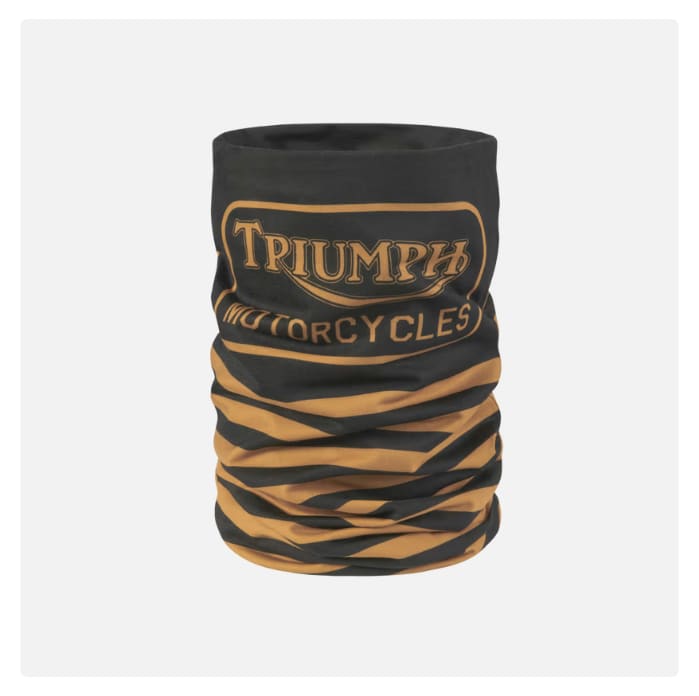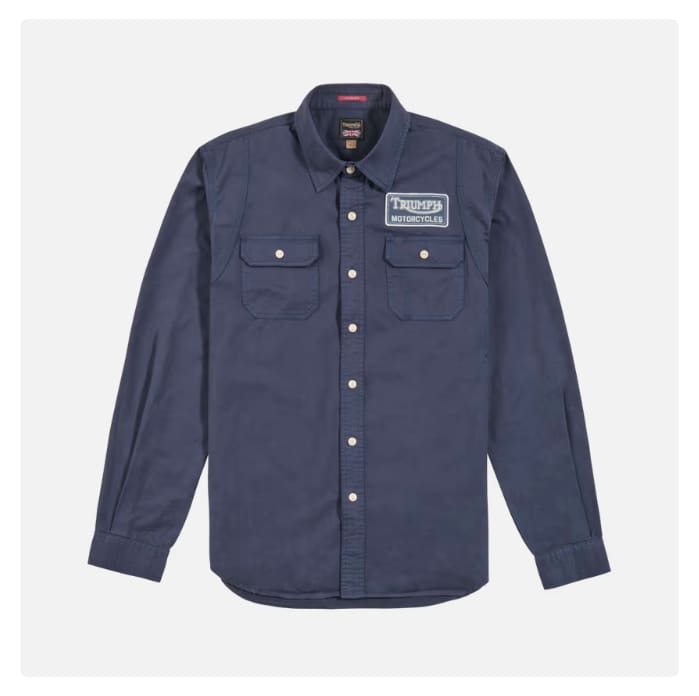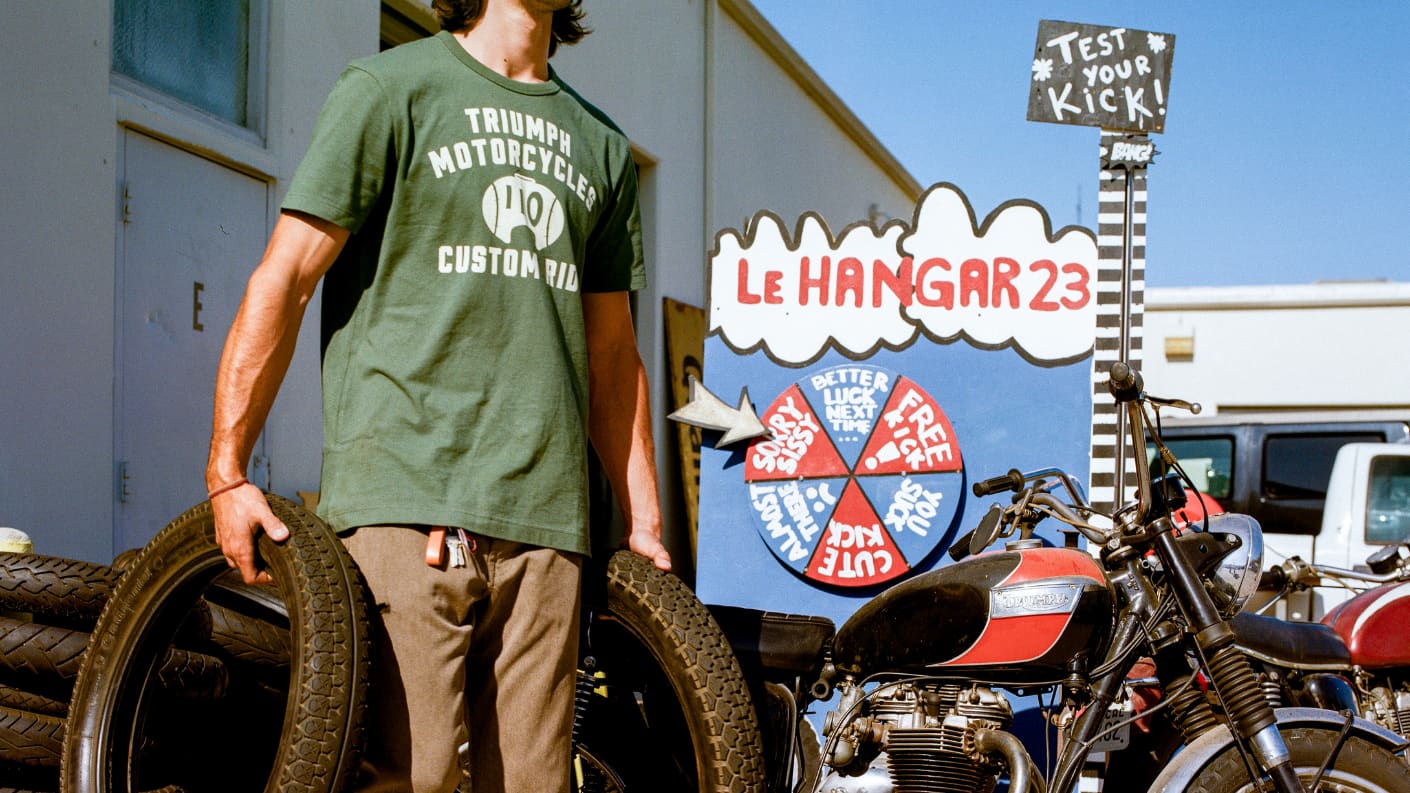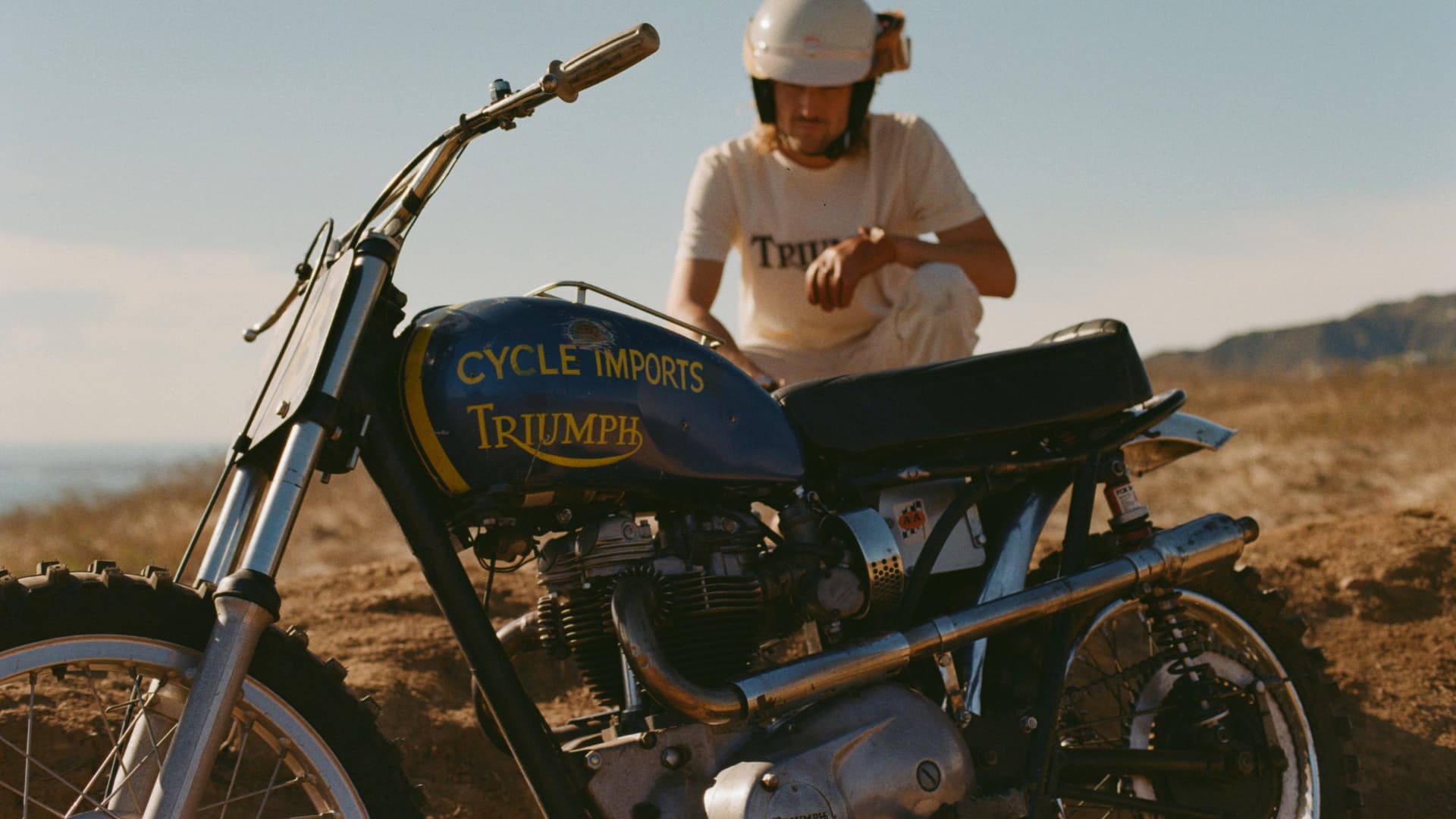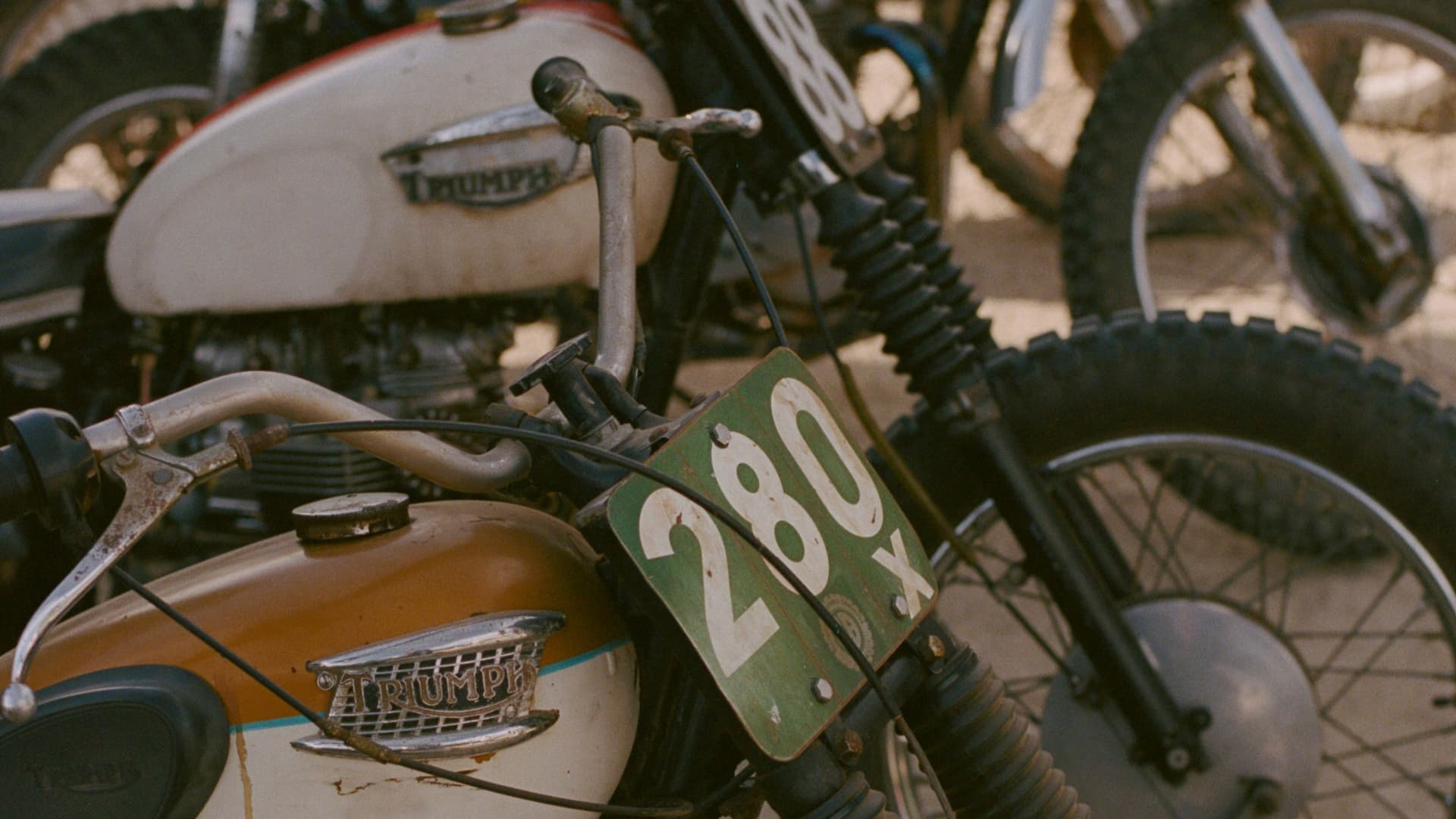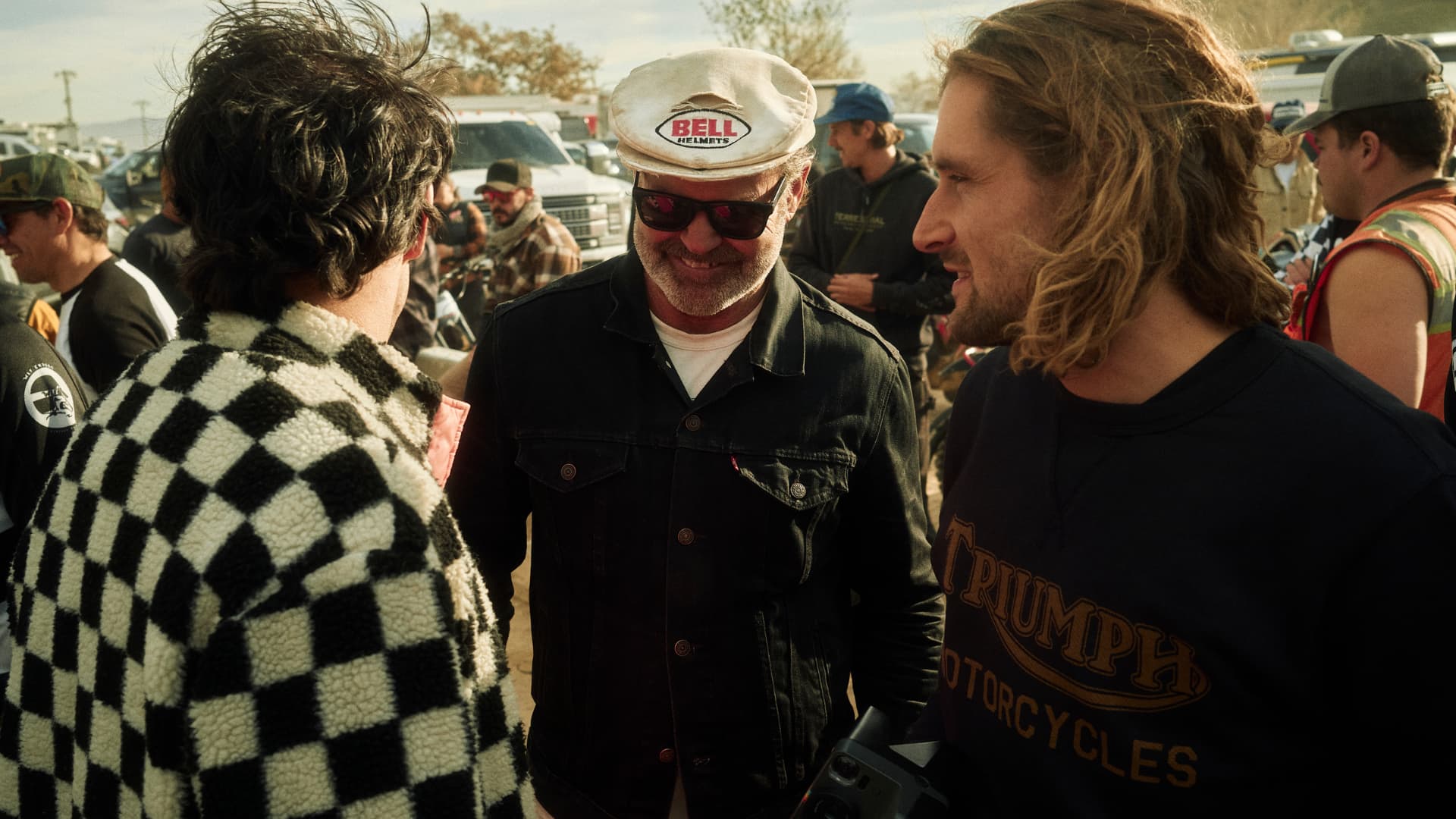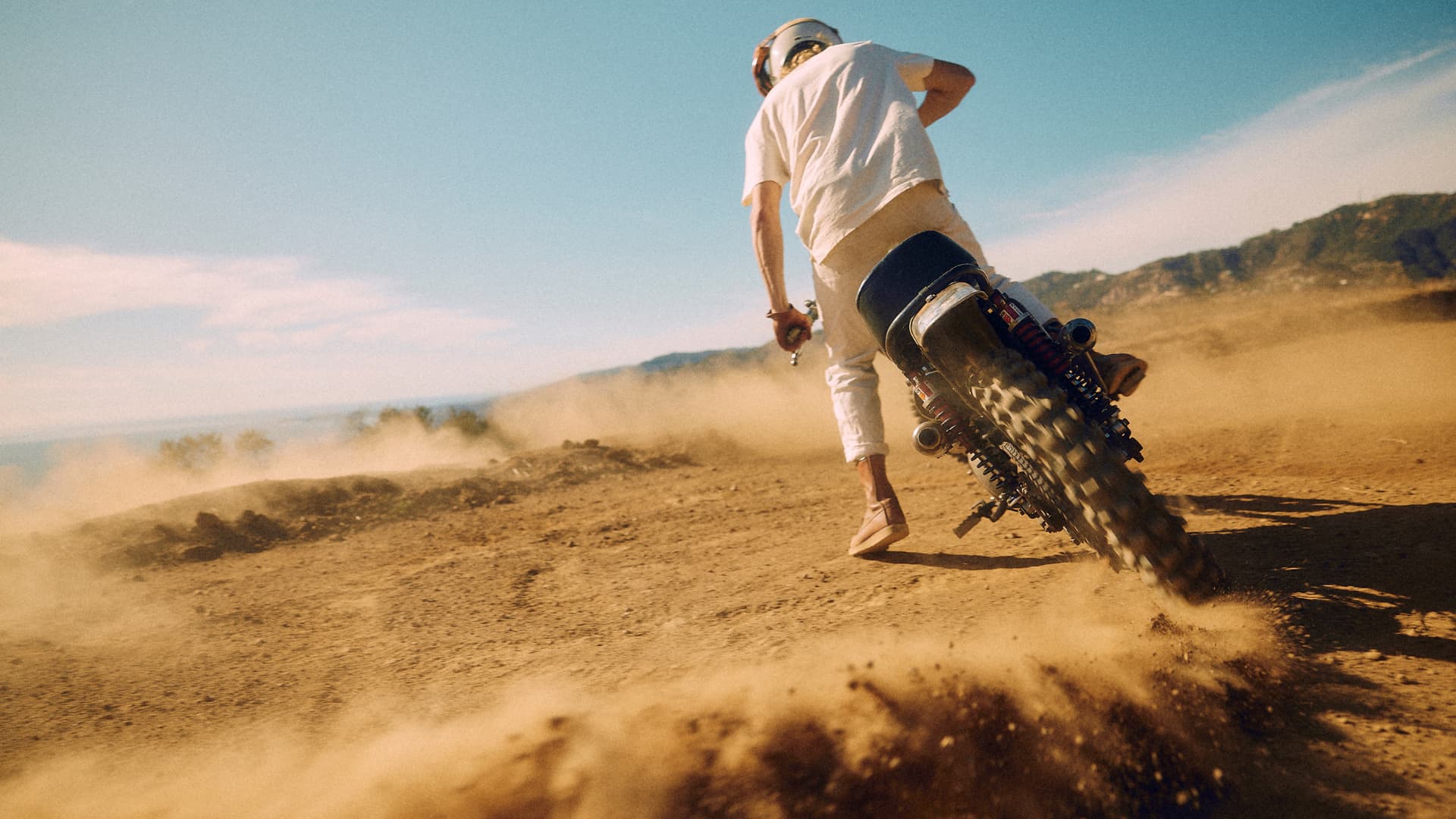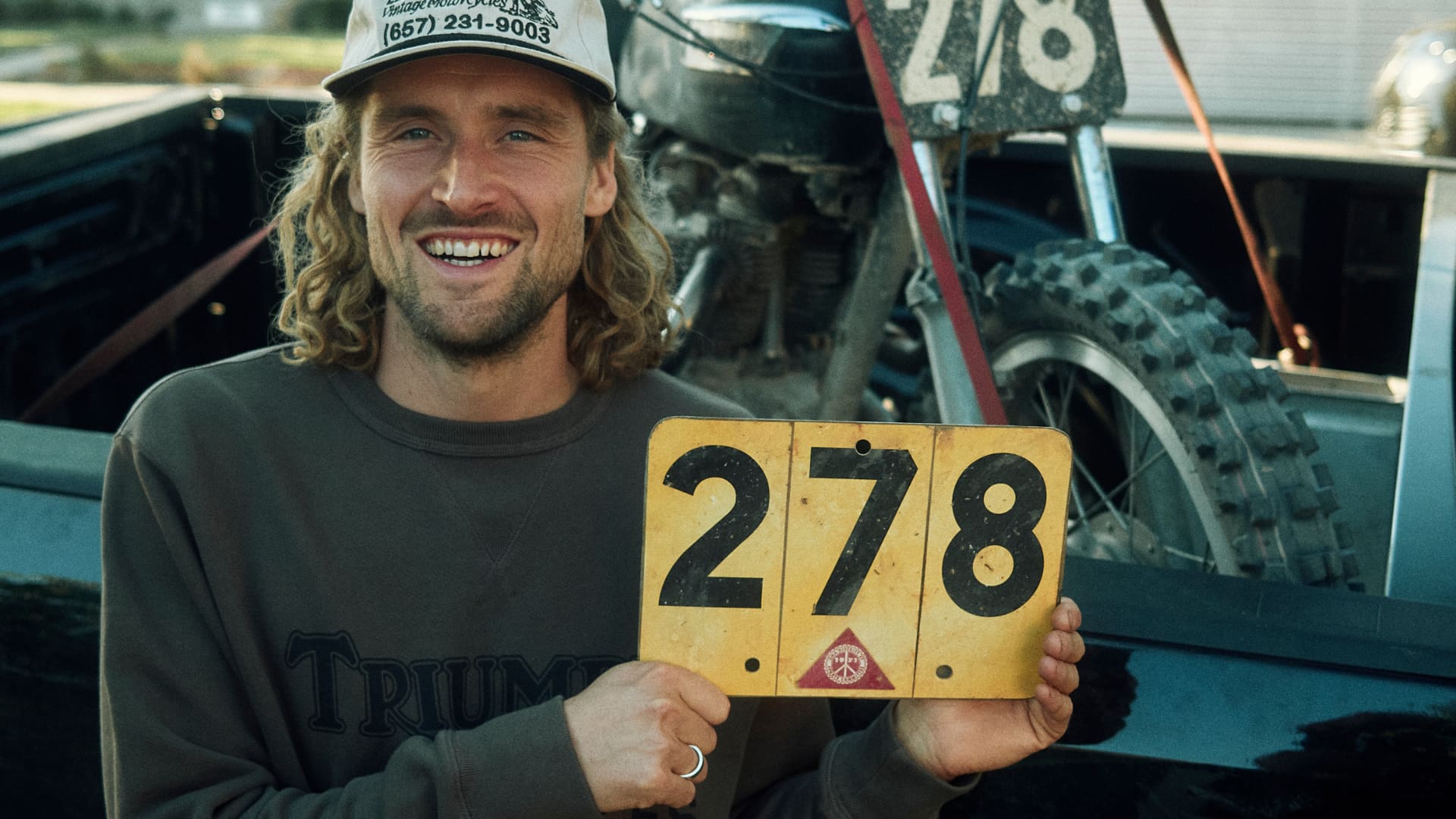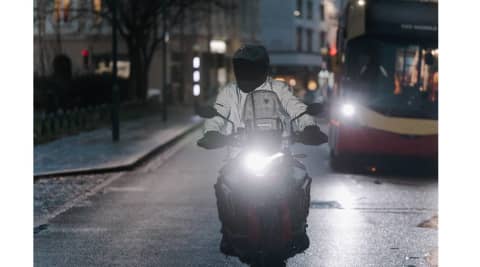Interview with Elliot Delapré - Founder of Le Hangar 23
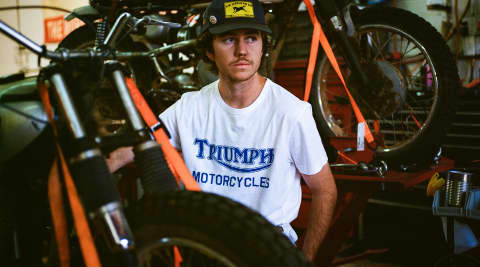
Tucked away in the industrial heart of Costa Mesa, California, Le Hangar 23 is more than just a motorcycle garage, a sanctuary for vintage British bikes and the stories they carry. At the helm is Elliot Delapré, a man whose life has been shaped by the hum of engines and the elegance of Triumph motorcycles.
From his early days in a French farm shop to building one of the most respected vintage Triumph spaces in the U.S., Elliot’s journey is one of passion, precision, and a deep reverence for the machines that defined a generation. In this interview, we step inside his world to explore the soul of Le Hangar 23 and the legacy of Triumph through his eyes.
Elliot, thanks for joining us. Let’s start with the name - why “Le Hangar 23”?
Elliot Delapré: It’s a tribute to my grandfather’s farm shop in France, where I first learned to work on anything with wheels. That place sparked my lifelong love for mechanics and motorcycles. “Le Hangar 23” honors that legacy and brings it into our workshop here in Costa Mesa. I was just a kid, but I was hooked. The smell of oil, the sound of engines, it was magic. That early experience shaped everything I do today.
Le Hangar 23 grew out of Triumph Classic Motorcycles. Can you tell us about that transition?
Elliot: Triumph Classic Motorcycles was a restoration shop that restored vintage British motorcycles from the 60’s and 70’s. When the previous owner retired, I acquired the remaining assets and built Le Hangar 23 with a team of his previous mechanics. We kept the same mission: to restore and preserve vintage British motorcycles with unmatched craftsmanship.
And Triumph motorcycles became your specialty. Why Triumph?
Elliot: I like Triumphs because there’s no A side or B side — just a beautifully balanced engine design that lets you do almost anything with them: custom builds, stock restorations, desert sleds, scramblers, choppers, you name it. The late ’60s twins, especially from 1968 to 1970, are masterpieces. They represent the golden era of British engineering. I raced them, rebuilt them, and now I’m lucky enough to make it my career. There’s a soul in those machines that modern bikes just don’t have.
Your team spans multiple generations. How does that influence your work?
Elliot: It’s one of our strengths. We’ve got mechanics in their 20s and others in their 70s. That mix brings together traditional craftsmanship and modern techniques. Every project is a collaboration across eras. We blend old-world techniques with modern precision. Every bike we work on is a tribute to its history and a promise to its future.
What’s a typical day like at Le Hangar 23?
Elliot: It’s hands-on and full of stories. We spend the week rebuilding engines, tuning carburetors, and sourcing rare parts. Then, come the weekend, we ride. The Southern California desert is our playground. It’s not just about fixing bikes—it’s about living the lifestyle.
You also race vintage Triumphs?
Elliot: Absolutely. Racing keeps us sharp. It’s one thing to restore a bike, it’s another to push it to its limits. On the track we learn more about how the bike behaves, how to unlock more capacity, and where we can refine our work. It’s the ultimate proving ground for the work we do and the best way to refine these machines beyond the workshop.
Beyond restorations, you also buy & sell vintage Triumphs?
Elliot: Yes, we certainly buy, sell, and trade bikes. Sometimes connecting buyers and sellers is a better path than a full restoration because it offers a lower entry point and lets people learn to love and work on their machine themselves. There’s nothing quite like taking a bike that’s been sitting in a garage wasting away, getting it running, and putting it back into someone’s hands to ride and live again. Every time another vintage Triumph gets back on the road, it feels like a win.
Why Triumph? What sets these bikes apart from other vintage brands?
Elliot: I actually started out working on vintage Japanese bikes, but the first time I saw a vintage Triumph I was immediately hooked. The look of the engine drew me in, and once I started wrenching on them, I realized how intuitive the engineering and design really are. Then I got on one and rode it—and that was it, I was hooked for life. There’s just nothing else that really compares to a vintage Triumph.
What’s next for Le Hangar 23?
Elliot: We’re developing parts for riders who want to build their own desert sleds or subtle customs at home, but that’s just one piece of it. At the core, our mission is community—making sure vintage Triumphs aren’t just sitting in garages, but being ridden, enjoyed, and kept alive for the next generation. Whatever it takes to keep these machines on the road and in the culture, that’s what we’re here to do.
FEATURED PRODUCTS

